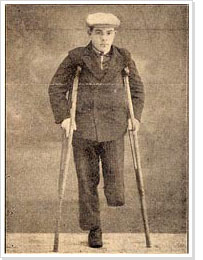Broadside ballads > Street singers and sheet vendors
 Various sheets feature references to the singers who sold them, for instance by including the text 'sung and sold by [?]' below the lyrics. The songs were sung and sold on streets and squares, during the carnival or door-to-door.
Various sheets feature references to the singers who sold them, for instance by including the text 'sung and sold by [?]' below the lyrics. The songs were sung and sold on streets and squares, during the carnival or door-to-door.
Singer/vendors are pictured on paintings, etches and wood carvings (sometimes on the broadsides themselves). They would usually stand on a raised platform with a curtain that could be rolled up behind them. This curtain held a series of pictures, like a comic book. While singing, the performers would point out with a stick where in the story they were at that moment. These curtains or blinds were thought to be known as smartlappen (literally: 'agony-cloths') in the twentieth century, thereby originating the name of the Dutch musical tearjerker genre. But this turns out to be a misunderstanding: the word 'smartlap' wasn't invented until the 1960s.
Singers would earn their meagre living by selling broadsides during their performances. Singing couples or even entire families would travel across the country practicing this trade. For musical accompaniment - if any - they would rely mostly on violins, percussion instruments (drum and tambourine), barrel organs (belly organs), and the occasional hurdy-gurdy.
Based on surviving testimony, we know that the quality of singing, accompaniment and lyrics often left much to be desired. The performances and broadsides were certainly never intended for the cultural elite, but neither did the songs' audience consist solely of the poor and needy.
